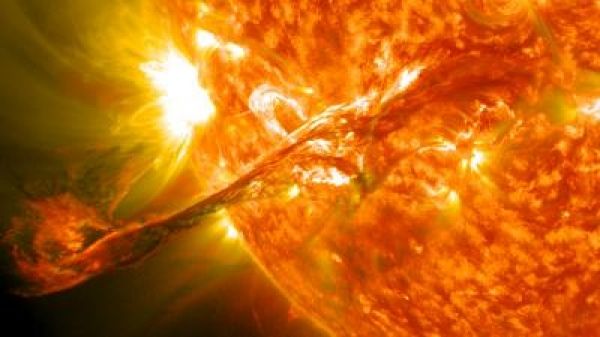The source of potentially hazardous solar particles, released from the Sun at high speed during storms in its outer atmosphere, has been located for the first time by researchers at UCL and George Mason University, Virginia, USA.
These particles are highly charged and, if they reach Earth’s atmosphere, can potentially disrupt satellites and electronic infrastructure, as well as pose a radiation risk to astronauts and people in airplanes. In 1859, during what’s known as the Carrington Event, a large solar storm caused telegraphic systems across Europe and America to fail. With the modern world so reliant on electronic infrastructure, the potential for harm is much greater.
To minimise the danger, scientists are seeking to understand how these streams of particles are produced so they can better predict when they might affect Earth.
In the new study, published in Science Advances, researchers analysed the composition of solar energetic particles heading towards Earth, and found they had the same “fingerprint” as plasma located low in the Sun’s corona, close to the middle region of the Sun’s atmosphere, the chromosphere.
Read more at University College London
Image: A coronal mass ejection, or CME, erupting into space on 31 August, 2012. Pictured here is a blended version of the 171 and 304 angstrom wavelengths taken from the Solar Dynamics Observatory. (Credit: Source: NASA Goddard Space Flight Center Credit: NASA/GSFC/SDO)


